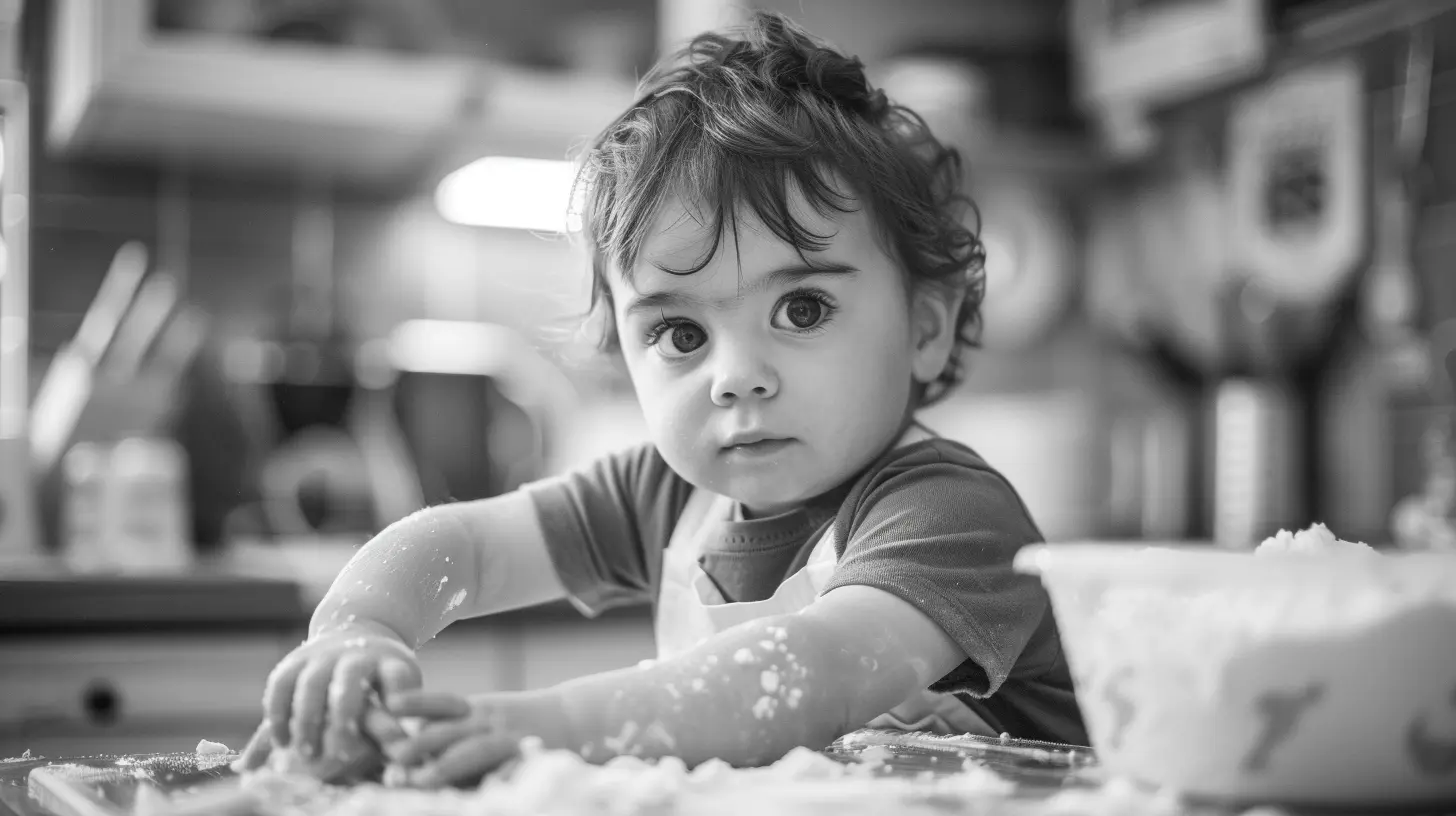Fostering Independence: The Power of Letting Toddlers Do It Themselves
11 September 2025
We’ve all been there. You’re rushing to get out the door, and your toddler insists on putting on their shoes… by themselves… at the speed of a snail on vacation. You glance at the clock, your hand twitching toward the Velcro straps. But you pause, take a deep breath, and let them try.
Welcome to the beautiful chaos of fostering independence in toddlers.
It’s messy. It’s time-consuming. And yes—it’s absolutely worth it.

Why Independence in Toddlers Even Matters
Let’s face it, parenting is full of choices. Some are small, like deciding if your child should have broccoli or carrots with dinner. Others are a bit bigger, like encouraging your toddler to take charge of small tasks, even if that means you’ll be ten minutes late or your kitchen looks like a tornado hit it post-breakfast.So why go through the trouble? Why not just do things for them and keep life smooth?
Because independence is the root of confidence. It’s what helps our little ones grow into capable, resilient, and self-assured adults. When kids believe they can do things on their own—without constant hand-holding—they begin to trust themselves. And that’s a life skill money simply can’t buy.

The Toddler Need for Control (and Why That’s Not a Bad Thing)
Here’s something interesting—toddlers aren’t just being difficult for the fun of it. When your child screams “Me do it!” while trying to butter their own toast, they’re not plotting your emotional downfall (promise).They’re actually doing what their brain is wired to do.
Toddlers are in a major developmental phase where they crave autonomy. They want to test boundaries. They want to see what they're capable of. It’s like a tiny scientist experimenting with life every single day. And just like any good science project, sometimes that includes failures, spills, and wonky results.
But every attempt—successful or not—is a step toward growth.

The Magic Behind “Letting Them Try”
Letting your toddler try something on their own is less about the outcome and more about the process. Whether they get it right or wrong isn’t even the point—the fact that they tried is where the magic lies.Here’s what happens when you give your toddler the space to do things themselves:
- They build motor skills. Pouring juice, putting on socks, zipping jackets—these tasks fine-tune coordination.
- They strengthen problem-solving abilities. When they struggle, their brain figures out workarounds.
- They boost their self-esteem. Few things light up a toddler like hearing, “You did that all by yourself!”
- They learn responsibility. Taking ownership of tasks teaches accountability in the long run.

Real Talk: When It’s Easier to Just Do It Yourself
Now, let’s keep it real. There are plenty of times when letting your toddler do it themselves feels like a one-way ticket to crazy town.Need an example? How about letting them help with laundry, only to find your whites dyed pink and socks missing in action?
Yup, we’ve all been there.
But here’s the trick—it’s not about letting them do everything all the time. It’s about choosing moments that matter. The goal isn’t perfection. It’s progress.
When you’re in a massive hurry or dealing with a stressful day, it’s okay to step in and move things along. But when there’s wiggle room? That’s your golden opportunity to hand over the reins.
Simple Tasks Toddlers Can Start Doing on Their Own
Wondering what kinds of things toddlers can realistically handle? The answer: way more than we usually give them credit for.Here are some everyday tasks that toddlers (around ages 2–4) can attempt with a bit of patience and practice:
- Putting on shoes or simple clothing
- Brushing teeth (with supervision)
- Putting toys away
- Washing hands
- Feeding themselves (even if it’s messy)
- Helping set the table
- Pouring water from a small pitcher
- Picking out clothes
- Dusting with a cloth
- Watering plants with a small cup
Will things be messy? Absolutely.
But will they also be proud of themselves? 100%.
How to Encourage Independence Without Pulling Your Hair Out
So how do you walk the tightrope between supporting their independence and your own sanity?Let’s break it down.
1. Start Small
Don’t throw your toddler into the deep end. Give them bite-sized responsibilities. Let them start by putting their dirty clothes in the basket or choosing between two snack options.2. Give Them Time (Lots of It)
Toddlers move at their own pace. Building in extra time for your daily routine helps you stay calm when they’re dawdling with their jacket zipper or organizing their stuffed animals for the tenth time.3. Offer Choices
Give them a sense of control by offering limited choices. “Do you want to wear the red shirt or the blue one?” Choices empower toddlers without overwhelming them.4. Embrace the Mess
Yes, it’s frustrating when cereal ends up all over the floor. But every mess is a memory in the making. Keep some cleaning supplies handy, and remind yourself that it’s all part of the process.5. Be Their Cheerleader
Celebrate efforts, not just successes. Cheer when they try. High-five the effort. Say things like, “I saw how hard you worked on that!”6. Offer Gentle Corrections
They’re going to mess up—and that’s okay. Instead of jumping in with “No, that’s wrong,” offer a calm and curious, “Hmm, that didn’t work. What could we try instead?”The Long-Term Payoff (Spoiler Alert: It’s Amazing)
Here’s the part that gets me every time—when we let our toddlers do things for themselves now, we’re setting the stage for future success.Today they’re zipping their jackets. Tomorrow, they’re organizing their school backpack. Next week? Maybe leading a group project in middle school.
The seeds we plant in the toddler years grow into life skills our kids will carry forever. Independence leads to confidence, and confidence leads to a lifetime of resilience.
The Role of Patience (Trust Me, You’ll Need It)
Teaching independence isn’t a straight line. It’s more like a rollercoaster—with surprising drops, unexpected turns, and the occasional feeling that you might lose your mind.You’ll need patience in spades. But here’s the thing—you’re not just being patient for their sake. You’re also giving yourself the gift of stepping back and watching your child bloom.
And that? That’s one of the greatest joys of parenting.
Common Myths About Toddler Independence (Let’s Bust a Few!)
There’s a lot of outdated advice floating around, so let’s bust a few myths right here.Myth #1: “They’re too young to do things on their own.”
Fact: Even toddlers as young as 18 months can handle small tasks. Don’t underestimate their abilities.Myth #2: “Independence means you’re not parenting actively.”
Fact: Encouraging independence is one of the most active forms of parenting. You’re guiding, supporting, and teaching every step of the way.Myth #3: “If they struggle, it means they’re not ready.”
Fact: Struggle is part of learning. Toddlers need to fall a few times to figure out how to get back up.
A Quick Word on Safety
Alright, before we wrap up, let’s touch on the obvious—some things are just not safe for toddlers to handle solo (sharp knives, hot stoves, running a bath, etc.).Letting them do it “themselves” still means close supervision, smart limits, and stepping in when things get dangerous.
Think of yourself as their safety net—not their puppeteer.
Final Thoughts: Letting Go to Lift Them Up
Fostering independence in toddlers is a journey—for them and for you. It’s about learning to let go, just enough, so they can rise. Watching your child start to take the reins—even in small ways—is one of the most rewarding parts of parenting.Sure, it might come with a side of spilled milk, mismatched socks, and a few deep sighs. But it also comes with giggles, beaming smiles, and the quiet, steady confidence that says: “I can do this.”
And isn’t that what we want for them in the end?
Happy parenting, friend. You’re doing amazing.
all images in this post were generated using AI tools
Category:
Parenting ToddlersAuthor:

Zelda Gill
Discussion
rate this article
1 comments
Geneva McTigue
Letting toddlers do it themselves: because nothing says 'parenting win' like a three-year-old covered in yogurt and proud of it!
September 17, 2025 at 4:01 AM

Zelda Gill
Absolutely! Embracing the mess is a key part of fostering independence—it's all about the process, not just the outcome!


